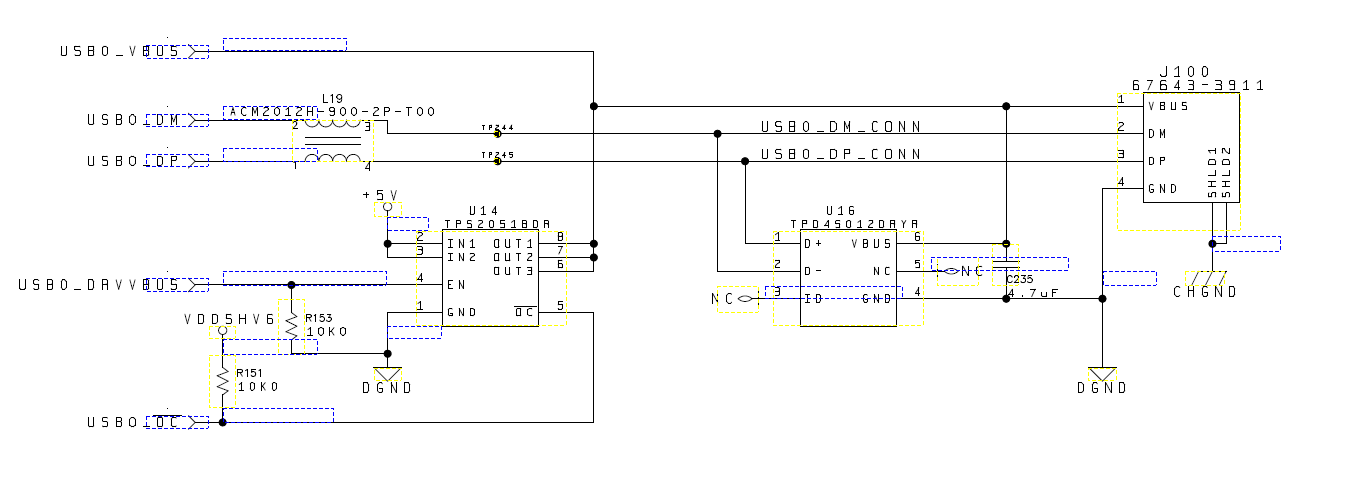I am working on AM3352 based system with two USB ports.
We tried to support SMS capability using USB 3G modem. To be able to send SMS, I need to switch the 3G modem from USB mass storage mode, to the communication device mode.
However, the mode switch works on USB1, but not on USB0.
But we had identical circuit for both USB0 and USB1!
The electrical engineer added some wires to monitor the Vbus signal, and noticed the Vbus will drop several volts during mode switch on USB0, causing the modem to reset to its default mass storage mode.
I was able to work around it by setting the default mode of both ports from OTG to host only.
The questions are:
- What's different between USB0 and USB1 on AM3352?
- How is over current condition handled differently in OTG and host mode?
This will help us to understand how to make the USB ports more robust.
Thanks.


